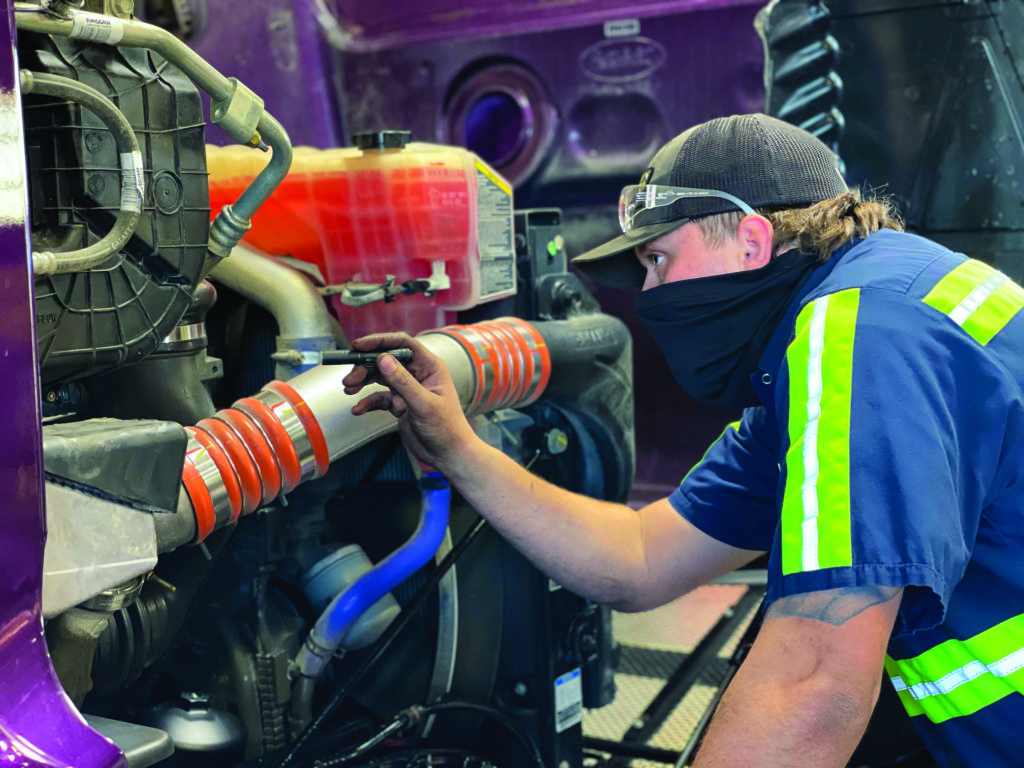Let’s be honest. Even those of us who are great drivers—the kind of drivers who make a career of it—are not always great at communicating our car’s issues, noises and shortcomings to the mechanics we visit. We might try to desperately recreate the noises and describe the barely noticeable jerks and bumps we experience while behind the wheel, but it’s usually in vain. Most of the time, us drivers just don’t have the vocabulary or knowhow to effectively communicate our car’s issues with a mechanic. And that’s exactly the problem Prime technicians were running into.
Drivers were showing up who needed work done to their trucks, but they weren’t sure what kind of work was needed, and sometimes it turned out that no work was needed at all. It was a communication nightmare that needed to be fixed. The solution Prime put into place was a simple one. It set up new assessment bays at each main terminal that allow a senior tech to transcribe driver concerns into a proper write-up mechanics can understand and work with.
Chris Holtmeyer, manager of fleet maintenance at Prime, says these assessment bays are nothing new in the industry, but most drivers aren’t used to seeing them at Prime terminals. “These are widely used at truck dealerships,” Holtmeyer says. “By having this bay, we create the opportunity to have one-on-one dialogue with drivers and break down communication barriers between drivers and technicians. Our No. 1 goal is to ensure our drivers are satisfied and have all their concerns addressed.”

Here’s how it works. Prime appoints a senior technician as the driver’s point person. This tech is then tasked with creating a detailed list of the driver’s concerns. “This write-up is then given to techs throughout the shop for repair,” Holtmeyer says. It also gives the tech team the chance to spot issues that only a dealer can address. This way, the driver and the maintenance team don’t have to waste time getting the truck in the shop only to realize the truck needs to go see the dealer. The senior tech should be able to spot this and send the driver directly to the nearest dealership. “If a driver comes in and makes the noise he’s been hearing, that senior tech can convert that noise into something meaningful for mechanics,” Holtmeyer says. “Or we’re able to say, this is normal, and this is what these trucks do. That will circumvent the driver from coming into the shop when they don’t have to.”
Prime’s assessment bays were put in place in April 2020, and with more than 700 trucks passing through the Springfield shop each week, and 471 in Pittston and 213 in Salt Lake City, the senior techs tasked with transcribing drivers’ maintenance issues have their work cut out for them. “What we’ve done is pulled some of our best techs off the floor,” Holtmeyer says. “It created a short-term loss for a long-term gain. We’re able to harness that experience and use it in a way that passes that experience throughout the shop.”
See the article in the Prime Ways issue here on page 16!
Looking to join the Prime Inc. Family? Learn more about Prime Inc here: www.primeinc.com.

